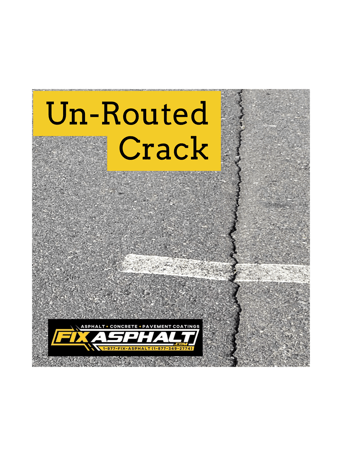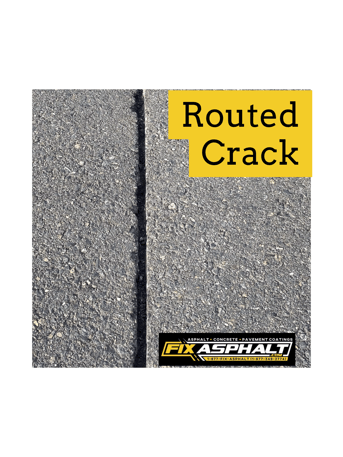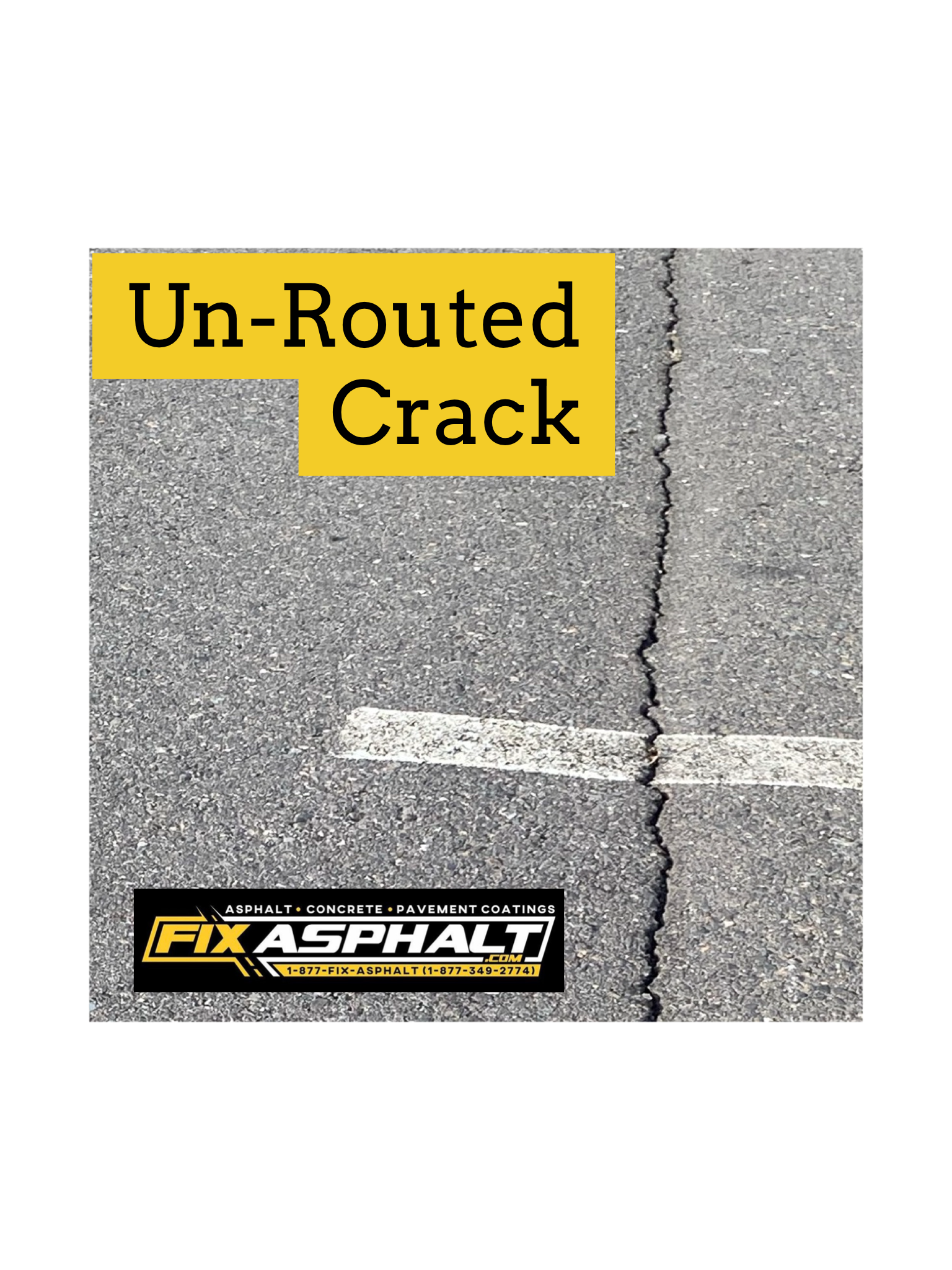What Is Crack Routing?


Crack routing is a process that uses a mechanical routing machine to widen a crack to a predetermined width and depth (Typically 1/2″ X 1/2″).
This process opens up the crack leaving a smooth area for hot-rubberized crack sealer to adhere to the walls of the crack itself.
Then, an 1,800 degree hot-air lance is used to further prepare the cracks by drawing out the asphaltic oils from inside the reservoir to create a thermodynamic bond with the new hot-rubberized crack sealer.
Why Should I Route The Cracks
In My Parking Lot?
Cracks that are routed prior to installing hot-rubberized crack sealer outlast a standard "blow & seal" application 5-1. This process often allows a crack sealing application to last twice as long vs non-routed applications. As a result, crack routing allows the property / facility manager to obtain better value from the overall crack sealing application.
Crack routing increases the life of any crack repair. The additional sealant volume in the routed reservoir allows the sealant to expand and contract effectively while protecting the integrity of the product.
Is Crack Routing Available For All Cracks?
Unfortunately, crack routing is not available for all cracks in a parking lot. Extremely wide cracks (larger than 1"x1") are too wide for routing. Routing is also not a good option for alligator cracking. Alligator cracks usually require a more in-depth repair such as cut-out and replacement.
Also, any cracks that have been previously sealed with any crack sealing product can not be routed, as the material will get caught in the machine
This is why it is so important to route and seal your parking lot cracks right the first time.
WHEN IS THE BEST TIME OF YEAR
FOR CRACK ROUTING?
Crack routing is best done in the fall and winter months. The colder temperature allow the cracks in the asphalt to fully expend. This expansion allows the crack walls to be furthest apart, hence creating the best way to optimally repair the crack.
During the winter months when the cracks are expanding, the reservoir has already taken the place of the expansion and will remain sealed. During the spring and summer months the asphalt contracts and the area is at is smallest area for material distribution.










Leave a Comment